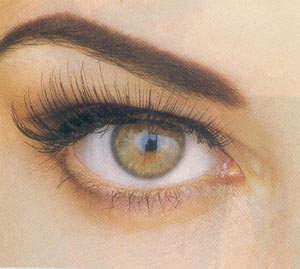Cosmetic Eye Surgery

Does your mirror reflect a tired face saddled with bags and bulges below the eyes. Are there creases on your eyelid? During the late thirties and early forties, the elasticity in the thin and delicate eyelid tissues starts to give out. Age and other factors such as obesity, swelling and medical problems tend to cause baggy eyelids. Heredity also plays a major role in this. Cosmetic eyelid surgery can help you turn back the effects of time that have resulted in unsightly bags under eye bags and droopy eyelids.
Cosmetic Eye Surgery
The area around the eyes is the first to reflect age since it loses its elasticity and stretch. The collagen in the dermis begins to diminish. The orbicularis muscle thins out and does not offer enough support. Deep fat pockets can result from the thinning out of the eyelid support system. Fat deposits in the area under the lower eyelid give the eyes a tired and puffy appearance. The muscles that hold this fat also undergo sagging. Cosmetic eye surgery can redefine your eyes by lifting droopy eyelids and removing excess skin from baggy eyelids. Sometimes a brow lift of forehead lift surgery is also done to offset the effect of droopy eyebrows.
Cosmetic eyelid surgery (Blepharoplasty) is an operation to remove excess skin, fat and muscle from around the eyes and to correct droopy eyelids and bags under the eyes. It can be performed on the upper lids and lower lids at the same time. Sometimes it is done to improve vision problems. In other cases it is performed as a cosmetic operation so as to improve the appearance of the eyes. Other than correcting droopy, baggy eyelids by removing excess skin, fat and muscle, blepharoplasty can also remove wrinkles.
But this form of cosmetic eye surgery will not remove 'crow's feet' and scowl lines nor can it eliminate dark shadows under the eyes. Blepharoplasty can be done along with other facial surgery procedures such as a facelift or brow lift.
The eyelid surgery is customized to suit the individual. Persons suffering from medical conditions such as hypothyroidism, Graves' disease and cardiovascular disease are cautioned from attempting cosmetic eye surgery. Those who suffer eye disorders such as glaucoma or detached retina are also advised against such cosmetic procedures.
Blepharoplasty
Blepharoplasty surgery takes one to three hours, depending on the extent of the surgery. If you are having all four eyelids done, the surgeon will probably work on the upper lids first, then the lower ones. In a typical cosmetic eye surgery procedure, the surgeon makes incisions following the natural lines of your eyelids within the creases of your upper lids and just below the lashes in the lower lids. The incisions may extend into the crow's feet or laugh lines at the outer corners of your eyes.
The skin is then separated from underlying fatty tissue and muscle. Excess fat is removed and sagging skin and muscles are trimmed. Fine sutures are used to close the incisions. If you have a pocket of fat beneath your lower eyelids but don't need to have any skin removed, your surgeon may perform a trans conjunctival blepharoplasty. In this procedure, the incision is made inside your lower eyelid, thereby leaving no visible scar. It is usually performed on younger patients with thicker and more elastic skin.
After surgery, the surgeon will probably lubricate your eyes with ointment and may apply a bandage. Your eyelids may feel tight and sore as the anesthesia wears off. The surgeon will prescribe pain medication to control the discomfort. You will be instructed to keep the head elevated for several days and to use cold compresses to reduce swelling and bruising. Healing of bruises may take a fortnight to a month. You will be shown how to clean your eyes, which may be gummy for a week or so.
Many doctors recommend eye drops, since your eyelids may feel dry at first and your eyes may burn or itch. For the first few weeks you may also experience excessive tearing, sensitivity to light, and temporary changes in your eyesight, such as blurring or double vision. Your surgeon will follow your progress very closely for the first week or two. The stitches will be removed within a week after surgery. Once they are removed, the swelling and discoloration around your eyes will gradually subside. You will look and feel much better.
It is possible to read or watch television after two or three days. However, you won't be able to wear contact lenses for about two weeks and even then they may feel uncomfortable for a while. Within a week or 10 days after cosmetic eye surgery, you should be able to resume work. By then, depending on your rate of healing and your doctor's instructions, you may need makeup to hide the bruising. There may be sensitivity to sunlight, wind and other irritants for several weeks. It is preferable to wear sunglasses and a special sun block made for eyelids when you go out. You will be advised against strenuous activities for about three weeks. It is especially important to avoid activities that raise your blood pressure, including bending, lifting, and rigorous sports. You might have to avoid alcohol since it causes fluid retention. Driving is also not recommended until the vision has returned to normal.
Complications
When eyelid surgery is performed by a qualified plastic surgeon, complications are infrequent and usually minor. Nevertheless, there is always a possibility of complications, including infection. You can reduce your risks by following instructions. The minor complications that occasionally follow blepharoplasty include double or blurred vision for a few days, temporary swelling at the corner of the eyelids and a slight asymmetry in healing or scarring. Following surgery, some patients may have difficulty closing their eyes when they sleep. Another very rare complication is ectropion, a pulling down of the lower lids.
In this case, further surgery may be required. Sometimes a pool of blood may collect under the skin around the eye and may need to be drained off through a surgical procedure. Those with an inherited tendency to form keloid scars may notice some side effects. The chance of complications depends on the exact type of procedure that is being performed and other factors such as an individual's general health.
Top of the Page: Cosmetic Eye Surgery
Tags:#cosmetic eye surgery
 Beauty
Beauty Cosmetic Surgery
Face
Cheek Implants
Mini Facelift
Non Surgical Face Lift
Eyebrow Transplantation
Cosmetic Eye Surgery
Ear Plastic Surgery
Rhinoplasty
Chin Liposuction
Cosmetic Dentistry
Facial Cosmetic Surgery
Chin Surgery
Reconstructive Facial Surgery
Body
Sublative Rejuvenation
Lower Body Lift
Anti-ageing Cosmetics
Wart Removal
Mole Removal
Breast Augmentation
Liposuction
Liposuction Surgery
Cosmetic Laser Surgery
Spider Vein Laser Surgery
Abdominal Liposuction
Umbilicoplasty Surgery
Plasma Skin Resurfacing
Skin Tag Removal
Top of the Page: Cosmetic Eye Surgery
Popularity Index: 100,565

